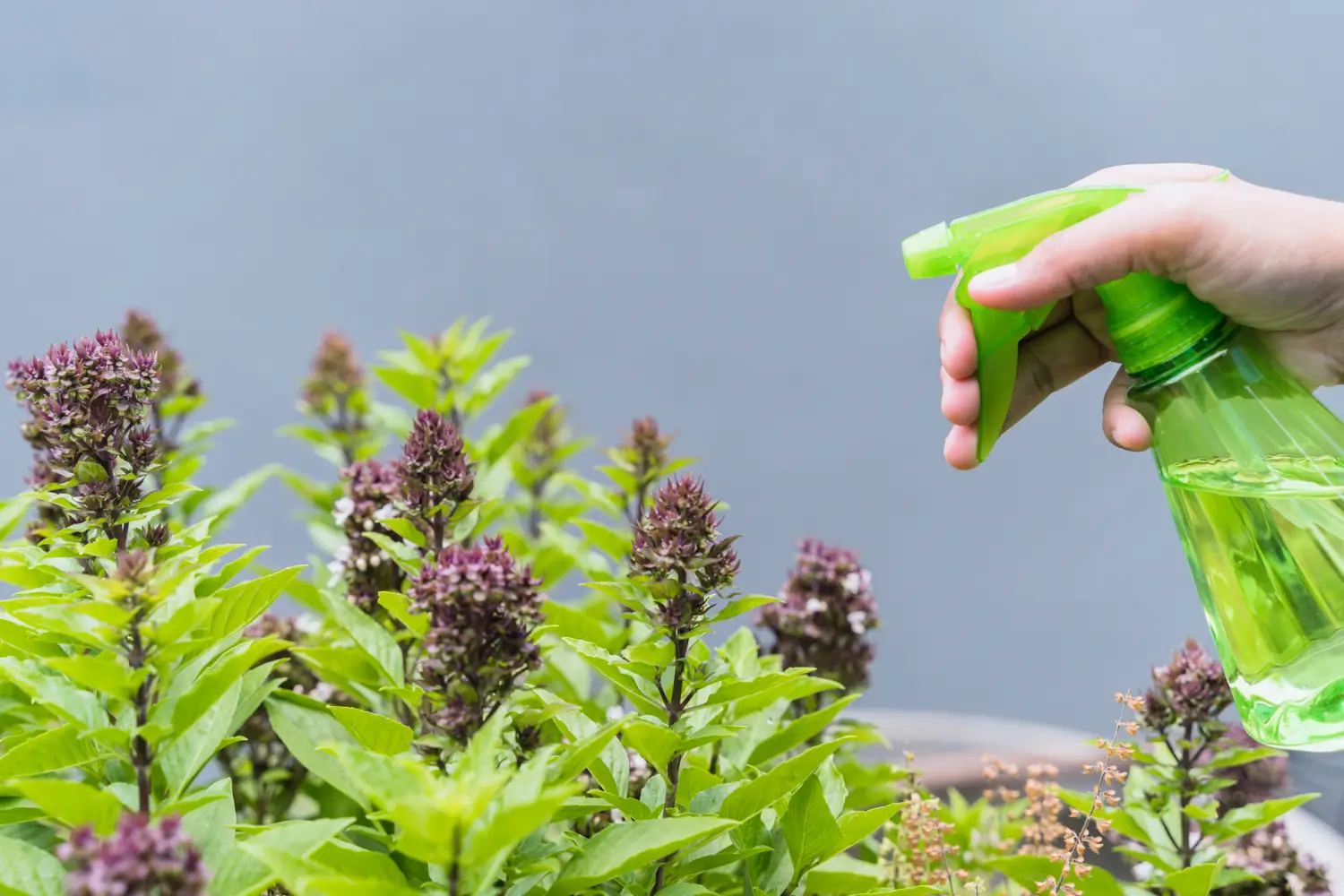
August 24, 2025

Pest Control is important for preserving healthy gardens, lawns and agricultural products. Bugs such as aphids, grubs and termites can damage plants, inhibiting growth and potentially killing them. Good pest control is required to protect plants, sometimes as part of an integrated pest management strategy.
Imidacloprid is a type of insecticide belonging to the neonicotinoid group. The way it works is by causing the insect’s nervous system to become paralyzed and die. It has been widely applied for pest control in residential and agricultural use. Although potent, doubts have been raised about its effect on pollinators and its environmental impact, so alternative approaches are being sought for protecting crops from pests.
Imidacloprid is a common systemic insecticide in the neonicotinoid class of chemicals. It is widely used to protect both plants in the field and plants in residential settings from pest insects. Imidacloprid is recognized for its speed and efficiency in controlling insects on ornamental, turf and crops that are destined for the consumer markets. It acts on the nervous system of the pest and causes paralysis and ultimately death, providing an effective product against pests.
Imidacloprid acts by blocking the insect’s nerve system, focusing on receptors involved with nerve communication.
Interaction with Nicotinic Acetylcholine Receptors in Insects
Imidacloprid targets the insect's nervous system by interacting with nicotinic acetylcholine receptors (nAChRs), which are located in the insect's central nervous system. These receptors play a crucial role in transmitting nerve impulses and facilitating communication between nerve cells. Imidacloprid binds to these receptors and mimics acetylcholine, a neurotransmitter that is vital for proper nerve function.
Effects on the Insect Nervous System Leading to Paralysis and Death
Once imidacloprid attaches to the nicotinic receptors, it over-activates the insect’s nervous system, resulting in uncontrolled nerve signals. This interferes with normal nerve functioning and in the end causes paralysis. The creature is unable to eat, shift position, or reproduce and it dies. The specific mode of action of imidacloprid makes it effective for controlling pests with minimal impact on plants and non-target organisms, when properly applied.
Imidacloprid comes in a few different forms that are appropriate for various pest eradication requirements and application techniques. These include:
Formulation | Description | Application Method |
|---|---|---|
Liquid | Used for foliar sprays or soil drenches, absorbed quickly by plants for rapid pest protection. | Applied directly to leaves (foliar spray) or around plant base (soil drench). |
Granular | Granules release imidacloprid over time, offering continuous protection against soil pests like grubs and termites. | Spread around the plant base or incorporated into the soil. |
Seed Treatment | Applied to seeds for early protection against pests like rootworms and aphids. | Coated on seeds before planting. |
Imidacloprid is a versatile insecticide which is used in agriculture, in homes and on pets. The broad-spectrum efficacy against pests has led to its widespread use as a pest control agent.
Imidacloprid is an important tool for agriculture and is applied to protect crops from a variety of damaging pests. Imidacloprid controls a wide range of commonly found pests, such as:
Imidacloprid is also sprayed on cotton, maize, and rice to protect these plants against pest damage and to improve crop yield and quality.
Imidacloprid is widely used in residential situations such as lawns, gardens, and ornamental plants. Its applications include:
Imidacloprid is commonly found in pet-care products, such as flea and tick treatments. It's commonly used in topical treatments, sprays and collars for dogs and cats. Imidacloprid, once applied, attacks the nervous system of the flea and causes paralysis and death.
Imidacloprid is also used to prevent and control termites in buildings. As a soil treatment, this product is dispersed around the perimeter of the home or directly into the foundation to prevent the house or other structure from becoming infested with termites. This insecticide is absorbed by the termites upon contact, giving a fatal dose to termites.
Although imidacloprid is useful for pest control, the use of this pesticide can pose potential risks to non-target organisms as well as the environment.
One of the main potential hazards of imidacloprid is its toxicity to non-target organisms. And that includes beneficial insects, critters and other creatures in the local area.
Imidacloprid's potential harm isn't limited to the environment - there is also evidence of effects on human health, especially among those who do not abide by the proper safety precautions when using the chemical.
The environmental persistence of imidacloprid may result in long-term impacts on soil, water, and ecosystems.
With increasing concerns about chemical pesticides, a number of gardeners and farmers are looking for more natural ways to keep pests at bay that are safer and more sustainable.
There are organic pesticides which originate from nature and are often seen as less damaging to humans, animals and the environment than synthetic chemicals.
Neem oil, which is derived from the seeds of the neem tree, is a powerful natural insecticide. Azadirachtin is a natural ingredient that controls pest insects by disrupting their hormonal systems. It is both repellent and a growth regulator. It alters insect feeding patterns, stops insects from feeding on treated plants and can sterilize pests, thereby decreasing their ability to reproduce.
Insecticidal soaps are based on potassium salts of fatty acids, which act by dissolving the outer cuticle of insects, causing them to dehydrate and die. They work best against soft bodied insects like aphids, mealybugs, spider mites and whiteflies.
Biological control involves the use of natural enemies of the pest such as predators, parasites or pathogens to suppress pest population levels. The goal of this approach is to create a self-adjusting system where helpful insects control pests.
Bringing in beneficial insects such as ladybugs and lacewing larvae can also be used to manage pests like aphids and whiteflies. Adult lady bugs and their larvae (their young) eat aphids and other soft-bodied insects, and can help to sharply reduce the pests. Lacewing larvae are aggressive eaters, consuming aphids, thrips and other pests.
Parasitoid wasps and beneficial nematodes serve to combat pests such as caterpillars, aphids and larvae in the soil without damaging plants. Parasitoids are frequently employed in integrated crops, such as greenhouses or fields with targeted pest issues. Nematodes can act as an important biocontrol agent for soil pests and the reliance on chemical soil treatments can be decreased.
Ethno-cultural practices change the growing environment and level of farming to discourage infestation by pests. Through these approaches user target the promotion of healthier plant systems, reduction of places for pests to harbor, and increasing diversity.
Physical barriers are basic but very effective means of protecting plants from pests, especially in small gardens or certain crops.
To ensure that imidacloprid is used safely and properly, here are some crucial tips.
Keep children and animals out of the treated area when applying such treatments until the recommended length of the drying time (typically 24 hours or more) has passed or until the insecticide is absorbed by plants.
Empty containers, surplus insecticide, unsupplied boxes and unused poison should be disposed of according to label instructions so that they will pose no environmental threat or danger to wildlife.
Keep imidacloprid in its original container, in a cool, dry area and out of food, water and pets' reach. Avoid exposure to keep it out of sight or reach of unsuspecting eyes.
Imidacloprid is a potent insecticide to control numerous pests in gardens, lawns and on the farm. It does this by attacking the nervous system of the insect, resulting in paralysis and death and is used to control pests. But there is concern about its effect on pollinators, like bees, and other wildlife, and for this reason, it must be used with care and according to safety standards. Growcycle has available various garden care products both chemical and natural safe pesticide alternatives for all types of garden, everything gardeners expect from the garden suppliers.
Disclaimer: This material is for informational purposes only and should not be relied on for legal, medical, financial, or any other form of professional advice.
There are imidacloprid alternatives, organic substitutions like neem oil, insecticidal soaps, and beneficial insects such as the lady beetle and lacewing to control pests without the negative effects of synthetic pesticides.
Imidacloprid acts on the insect nervous system by attacking and binding the nicotinic acetylcholine receptors. This results in overexcitation of the nervous system, causing paralyses and death of the pest.
Imidacloprid is used to control a variety of sucking and soil-dwelling insects such as grubs, aphids, white flies, and termites. It is used in lawns, gardens, farming and around pets for control of flying and crawling insects.